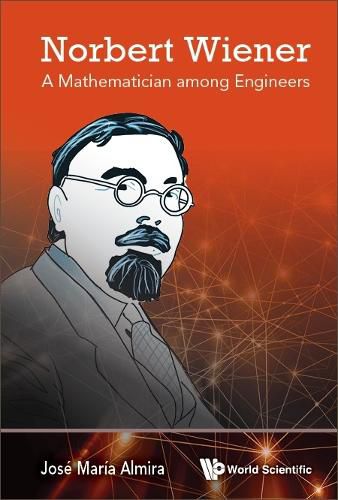Readings Newsletter
Become a Readings Member to make your shopping experience even easier.
Sign in or sign up for free!
You’re not far away from qualifying for FREE standard shipping within Australia
You’ve qualified for FREE standard shipping within Australia
The cart is loading…






This title is printed to order. This book may have been self-published. If so, we cannot guarantee the quality of the content. In the main most books will have gone through the editing process however some may not. We therefore suggest that you be aware of this before ordering this book. If in doubt check either the author or publisher’s details as we are unable to accept any returns unless they are faulty. Please contact us if you have any questions.
Norbert Wiener (1894-1964) is well known by the general public as the founder of Cybernetics, by mathematicians as one of the first north-American mathematicians who win international prestige - as the person who formalized Brownian motion, solved the Zaremba problem and was the author of two seminal papers devoted to Generalized Harmonic Analysis and Tauberian Theorems - and by engineers as the person who proposed much of the Fourier analysis used by them and contributed to the foundation of the statistical theory of communication - which includes the use of wave filter theory, information theory and prediction theory in control and communications as well as the automation of all types of electronic devices.Wiener’s research, which was frequently motivated by physics, engineering, or biology, was a clever mixture of Fourier analysis and probability theory. His contributions to electronics through his work on filtering (that is, the separation of noise from a message), and the theory of prediction made him very valuable to electronics engineering. In addition, Wiener addressed many other topics, including the formalization of the Brownian motion, ergodic theory, wave filter theory, and information theory. Taking all these ingredients together, he ventured to create a new scientific paradigm: cybernetics.This book contains a detailed explanation of Wiener’s life, his many colleagues, and the historical context in which he lived, as well as Wiener’s work. It also contains a large appendix about ‘Wiener, Shannon, and the rise of a Digital World’. The main focus of the book is on Wiener’s work related to electrical and electronic engineering and the way he used his mathematics to create the main concepts and techniques of the statistical theory of communication. In particular, the author presents Wiener surrounded by the engineers that worked at MIT with whom he maintained strong contact. It was in this atmosphere that information theory arose, and Wiener was a main influence on the people who developed that theory.
$9.00 standard shipping within Australia
FREE standard shipping within Australia for orders over $100.00
Express & International shipping calculated at checkout
This title is printed to order. This book may have been self-published. If so, we cannot guarantee the quality of the content. In the main most books will have gone through the editing process however some may not. We therefore suggest that you be aware of this before ordering this book. If in doubt check either the author or publisher’s details as we are unable to accept any returns unless they are faulty. Please contact us if you have any questions.
Norbert Wiener (1894-1964) is well known by the general public as the founder of Cybernetics, by mathematicians as one of the first north-American mathematicians who win international prestige - as the person who formalized Brownian motion, solved the Zaremba problem and was the author of two seminal papers devoted to Generalized Harmonic Analysis and Tauberian Theorems - and by engineers as the person who proposed much of the Fourier analysis used by them and contributed to the foundation of the statistical theory of communication - which includes the use of wave filter theory, information theory and prediction theory in control and communications as well as the automation of all types of electronic devices.Wiener’s research, which was frequently motivated by physics, engineering, or biology, was a clever mixture of Fourier analysis and probability theory. His contributions to electronics through his work on filtering (that is, the separation of noise from a message), and the theory of prediction made him very valuable to electronics engineering. In addition, Wiener addressed many other topics, including the formalization of the Brownian motion, ergodic theory, wave filter theory, and information theory. Taking all these ingredients together, he ventured to create a new scientific paradigm: cybernetics.This book contains a detailed explanation of Wiener’s life, his many colleagues, and the historical context in which he lived, as well as Wiener’s work. It also contains a large appendix about ‘Wiener, Shannon, and the rise of a Digital World’. The main focus of the book is on Wiener’s work related to electrical and electronic engineering and the way he used his mathematics to create the main concepts and techniques of the statistical theory of communication. In particular, the author presents Wiener surrounded by the engineers that worked at MIT with whom he maintained strong contact. It was in this atmosphere that information theory arose, and Wiener was a main influence on the people who developed that theory.